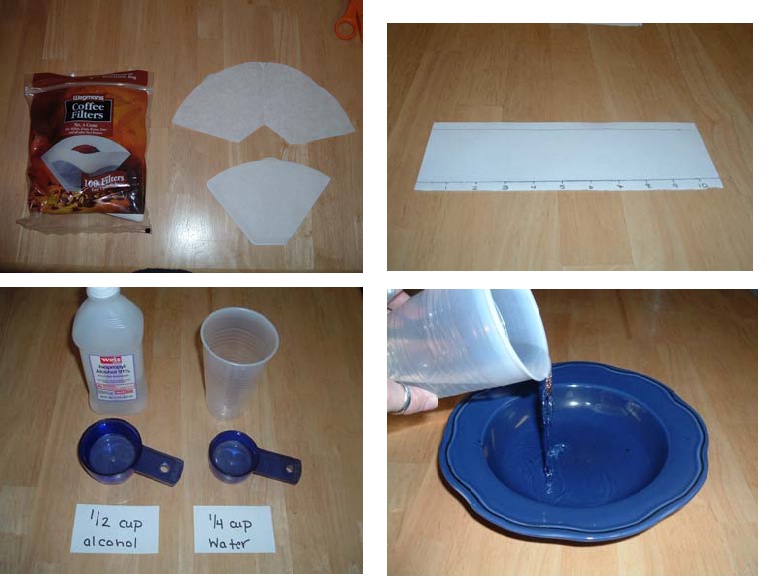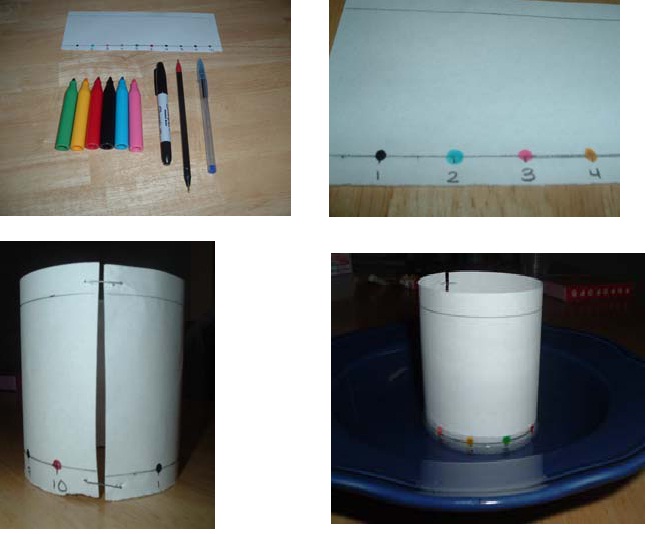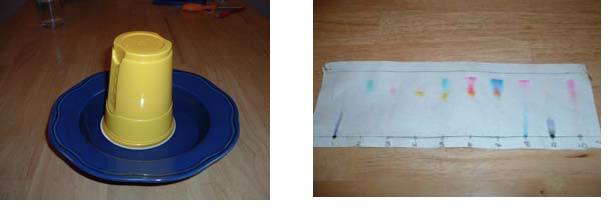





Published on Apr 02, 2024
Paper Chromatography is a method used to separate mixtures into their different parts. Paper chromatography has been most commonly used to separate pigments, dyes and inks. To do paper chromatography you need paper with a lot of cellulose fiber (fiber found in wood) and chromatography solution, which is usually made from a mixture of water and alcohol. Paper chromatography works because inks usually contain several different colors. Ink manufacturers mix different amounts of primary colors like blue, red and yellow to make many other colors. During paper chromatography, we can separate basic colored inks that contain different ingredients because some inks are more attracted to the paper and some are more attracted to the alcohol or water. In this experiment you learn how to prepare chromatography paper and solution. You will also use these skills to separate your own samples of inks into their basic colors.
1. Learn how to do paper chromatography
2. Observe the separation of different types of ink using paper chromatography
• Large 4-inch cone coffee filter
• Pencil
• Ruler
• Rubbing alcohol
• Water-based markers
• Different brands or colors of pens
• Water
• Small plate or bowl with flat bottom
• Medium-sized plastic container
• Measuring cups
• Stapler
1. Cut the seam of the large 4-inch cone coffee filter so that it opens up into a fan shape. Cut out a rectangular piece that is 8 x 15 cm in size.
2. Position the filter paper so that it is longer going across (see picture below).
3. Draw a line using a pencil across the filter paper that is 1 cm from the top of the sheet and 1 cm from the bottom of the sheet. On the bottom line mark small lines every 2 cm and number each small line. Do not use pen for this step! You have now prepared your chromatography paper.

4. In your plastic container, mix 1/2 cup of rubbing alcohol with 1/4 cup of water. Pour carefully into the shallow plate or bowl. The height of the liquid should be no more that 1 cm. This will be your chromatography solution. Wash and dry the container for the next part of the activity.
1. Look at the pens and markers you want to use in this activity. Before beginning the activity, think about the following questions -
a. What colors are the pens and markers?
b. How do you think the manufacturers make these different colors? Do they have to use more than one color of ink?
c. Do you think each pen or marker will give the same separation results on the chromatography paper? Why or why not?
1. On each small line of your chromatography paper, make tiny dots with your markers and your pens. Mark one pen or marker on each line. Make a key of which pen or marker goes with each number on a separate piece of paper.
2. Staple the ends of your paper so that they do not touch each other.
3. Carefully place the paper onto the plate or bowl so that the marker/pen dots are just above the chromatography solution. Place a dry plastic container over the paper. Make sure that the paper does not touch the sides of the container.

4. Allow the paper to sit in the solution until the liquid reaches the top line. Do not move or shake the set-up during this time. This may take about 1/2 an hour. Remove the paper and allow it to dry on a paper towel.
5. Observe the results. What do you see? What happened to the different markers?

Mystery Ink Analysis This experiment is based on techniques used in crime labs to investigate ink samples found at crime scenes. You will need to learn basic chromatography techniques from the activity above before you can try this activity.
1. Gather 4 – 5 different brands of black or blue pens. Have a friend choose one of the pens and write you a message while you are not looking.
2. Now you can use chromatography to guess which pen your friend used. Carefully cut out a piece of their message and dissolve the ink off of the paper using ½ a teaspoon of rubbing alcohol.
3. While the ink is dissolving, prepare a piece of chromatography paper like you did in the paper chromatography activity.
4. You will also need to prepare some chromatography solution or you can re-use solution from a previous experiment.
5. Take your sample pens and make small marks on the lines of the chromatography paper. Make a key of which pen goes with each number on a separate piece of paper. On the last line, make a mark of the dissolved ink from your friend’s message.
6. Place your chromatography paper into the solution and allow the solution to reach the top line.
7. Compare all of your samples to your friend’s sample. Can you guess which pen your friend used to write his or her note?
Paper chromatography is just one of the methods that scientists can use to separate different mixtures. However, it is the only one that depends on the interactions between paper and ink to make it work. Since its discovery, paper chromatography has been used for many things. For instance, it has been used to identify the components of different inks, to separate plant pigments and it has even been used to help solve crimes!
1. http://www.teachersfirst.com/lessons/forensics/ink-lab.html
2. www.reachoutmichigan.org/funexperiments/quick/csustan/mrsketch.htm